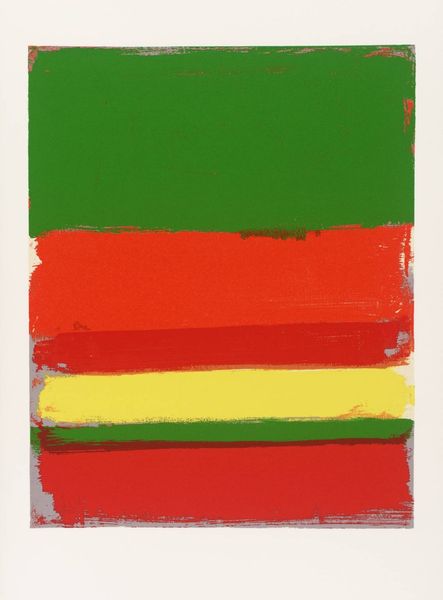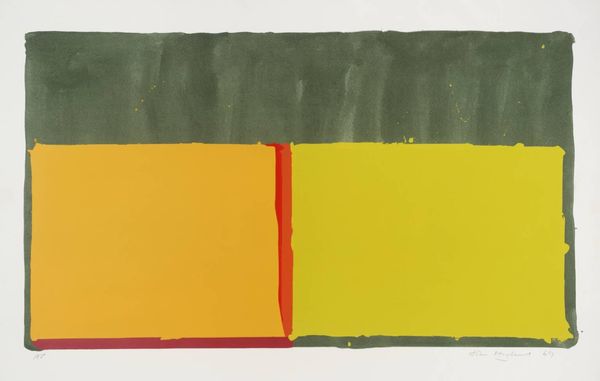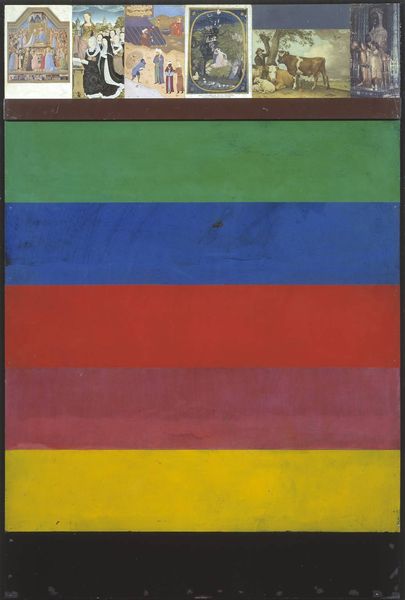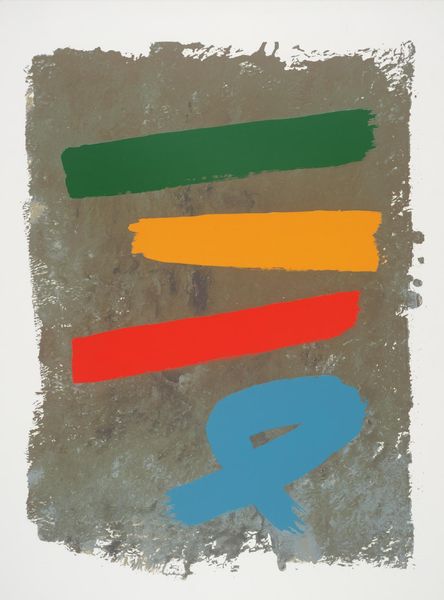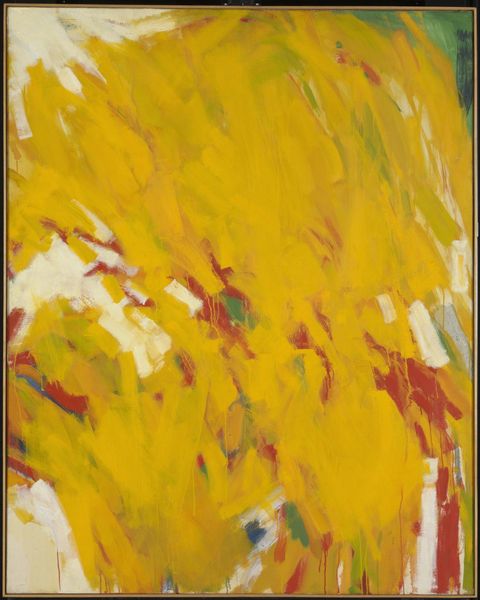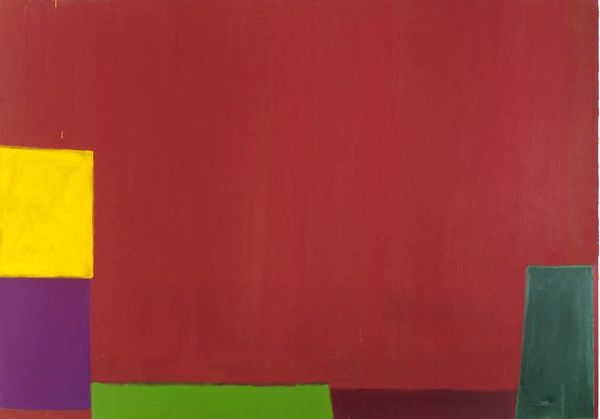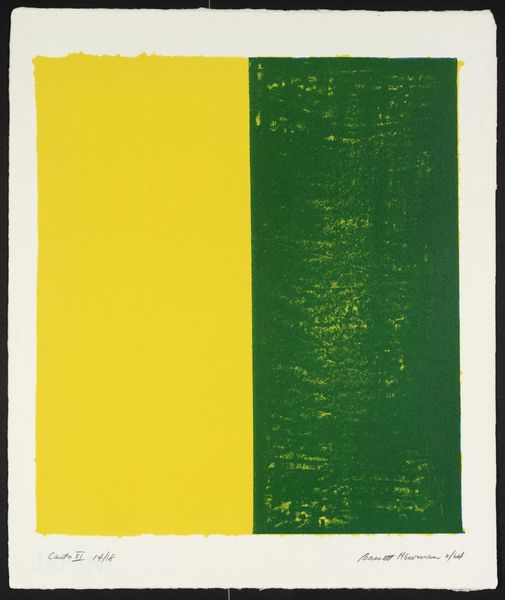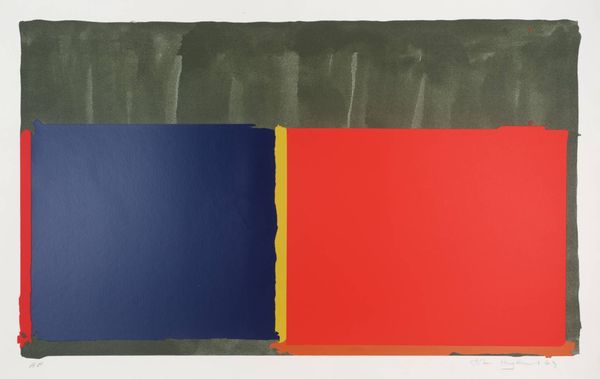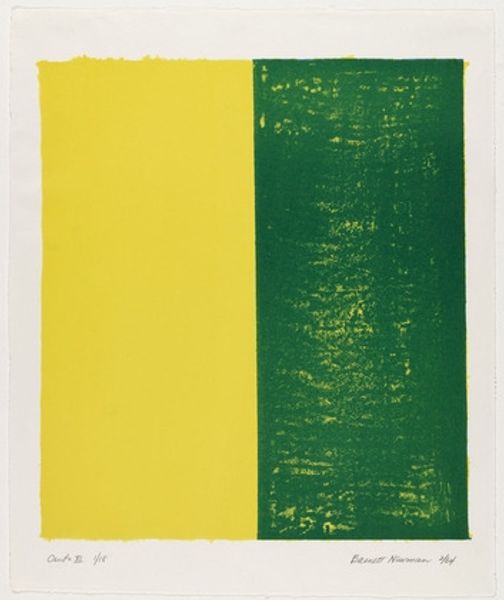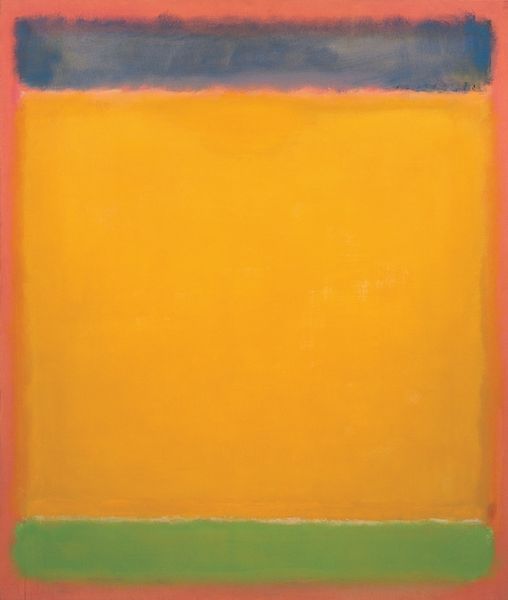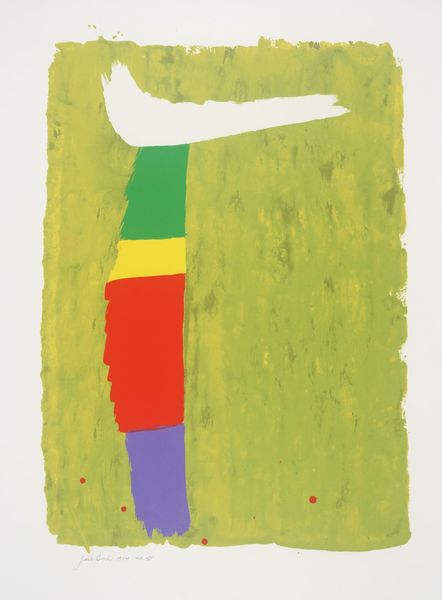
acrylic-paint
#
abstract-expressionism
#
abstract expressionism
#
colour-field-painting
#
acrylic-paint
#
acrylic on canvas
#
geometric
#
abstract-art
#
abstraction
#
abstract art
#
modernism
Copyright: Frank Bowling,Fair Use
Curator: Frank Bowling painted "Who's Afraid of Barney Newman" in 1968. He employed acrylic on canvas for this exploration of color field painting, and it's currently part of the Tate Modern collection in London. Editor: Wow, that's striking! Immediately, it gives me this almost disorienting feeling, like looking into a fractured mirror or standing on shifting ground. Those three bold vertical bands—green, yellow, red—they vibrate against each other. Curator: That sense of unease is perhaps deliberate. The title references Edward Albee's play "Who's Afraid of Virginia Woolf?", suggesting a confrontation with established artistic norms and perhaps a nod to Barnett Newman, a giant of abstract expressionism. Editor: Oh, absolutely. I love the bravado, the questioning right in the title! It’s like Bowling's wrestling with his predecessors while forging his own path. And the textures, look at how the paint application differs in each band. It feels so raw. Curator: Bowling, while engaging with abstraction, was also navigating the socio-political landscape of the 1960s, particularly questions of identity and representation. He was openly critical of the art world’s limitations. The staining technique allows the canvas to remain visible and is quite typical in color-field painting, which was popular at the time. Editor: Visible and vulnerable, almost. And the colors themselves, the boldness—it feels unapologetically present, doesn't it? Makes me think about flags, about claiming space. He’s declaring his space with these massive blocks of color. It's a confident declaration, even if wrapped up in the questioning title. Curator: It's important to remember that color-field painting, and abstraction in general, became sites for debates about cultural authority and meaning during this time. What did these colors represent in such an abstract landscape? Were these colors also related to the Jamaican flag, and a means of asserting himself within the American art scene, as a person of color? These were all key questions from the era. Editor: Looking at this, I'm less concerned with answers, you know? For me, it’s more about that visceral reaction, that pure sensation of color hitting you. It's brave and messy and alive. So the real question becomes what questions do these works pose? Curator: A pertinent question, indeed, on which to conclude our discussion today. Editor: Indeed.
Comments
No comments
Be the first to comment and join the conversation on the ultimate creative platform.
